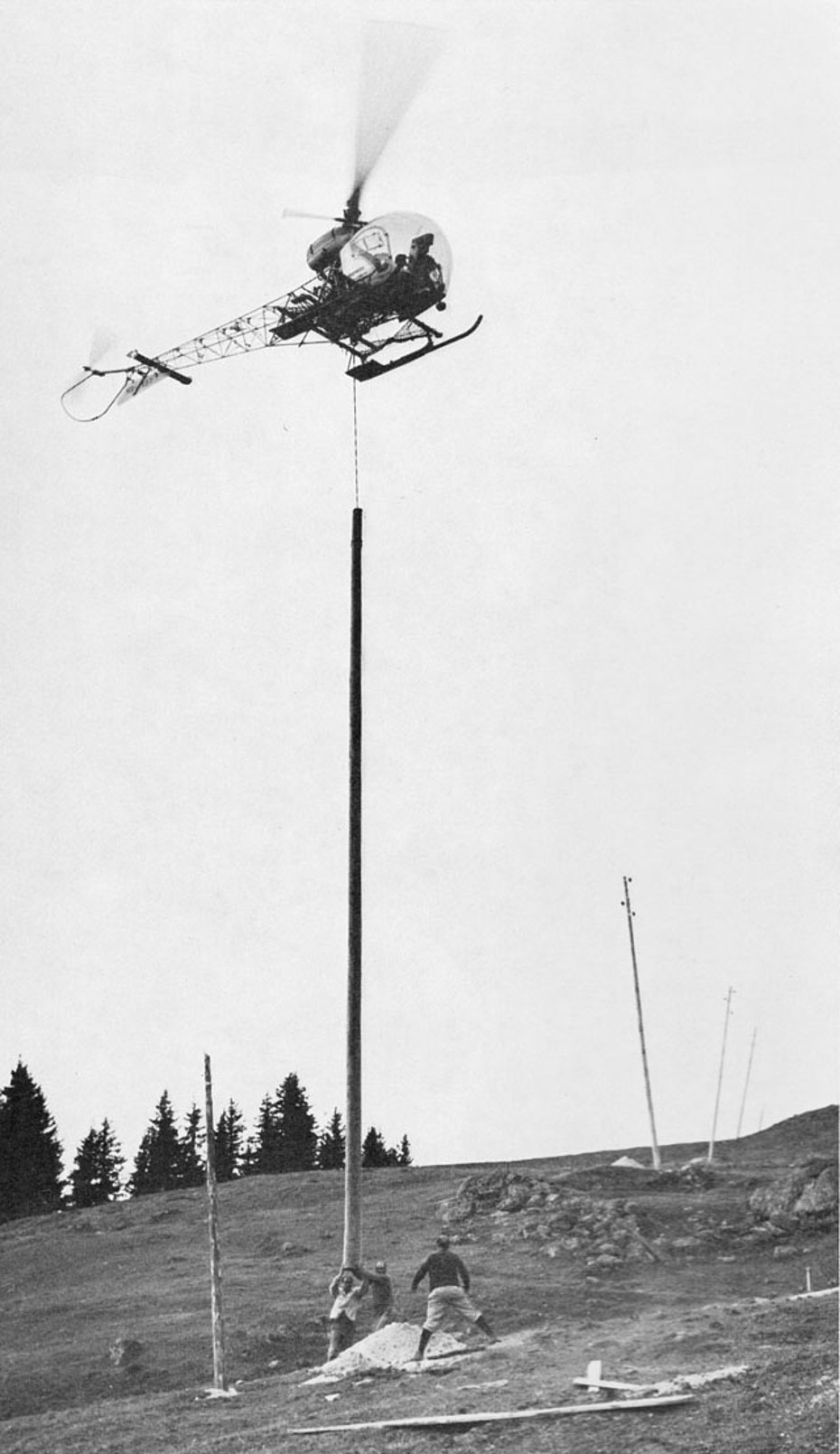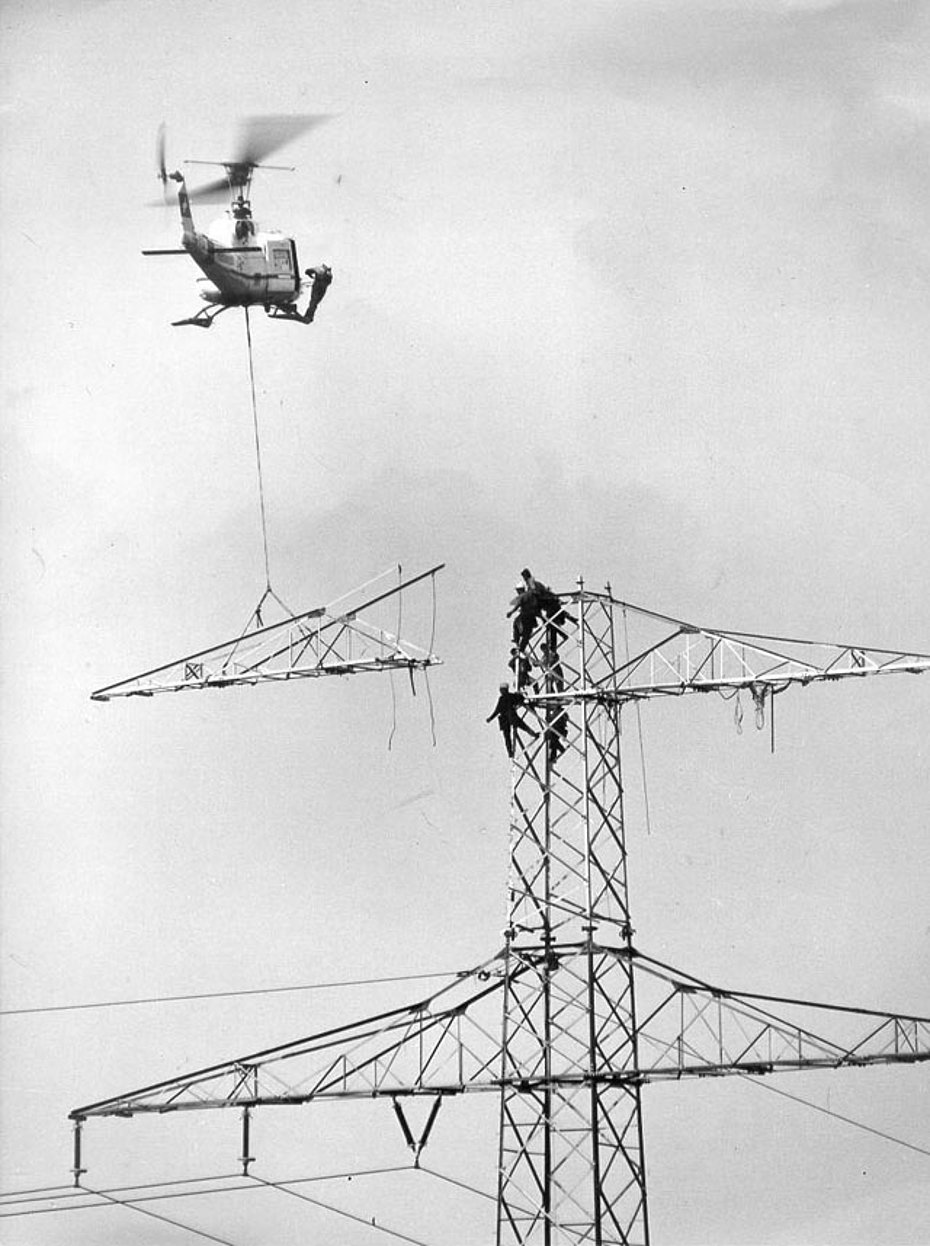
In expert pilot hands the helicopter immediately showed its unique abilities. Among the domains that have always profited of its versatility there are the electricity industries and the radio-communication nets. A classical example is the transportation and the positioning of wood poles (picture 1).

Cable-laying by helicopter was also successfully demonstrated.
In 1969 Heliswiss started a new activity using its Agusta-Bell 204B, namely the aerial assembly of pylons, antennas, prefabricated houses, etc. Only the most experienced pilots could do these flights which required steel nerves. The same qualities were required of the men suspended on the structure during the assembly of the elements. This is probably one of the most dangerous activity for a pilot and his ground crew.
At the beginning these delicate operations were even more difficult because of the lack of efficient radio-communication. For these reasons during these kind of flights, an assistant stand on the right skid next to the pilot and assisted him giving the necessary indications.
Walter Tschumi (1931-2003), ex chief-pilot of Heliswiss, was one of the pioneers and a great specialist of these "hair-raising" flights.
Picture 2 shows the Agusta-Bell 204B HB-XCQ during the aerial assembly of a pylon. Heliswiss pilots and their flight assistants rapidly acquired special skills in airborne work on metal and concrete masts, as well as for the building and maintenance of high tension electrical networks. Appropriate auxiliary means were developed and special groups were set up for this delicate precision work.
Without visual reference points these operations could be extremely difficult for the pilot. In fact it is not easy to keep in position the helicopter while the ground crew assemble the elements of the structure. Unexpected gusts of wind or rapid weather changes are only some of the difficulties which may occur during this kind of aerial operation. Nowadays the pilot uses the so called bubble-window and does the necessary corrections with the information he receives via radio from the ground crew. Modern helicopters can also be equipped with gyro stabilizers which considerably help the pilot during these delicate assembly operations.
HAB 12/2009

